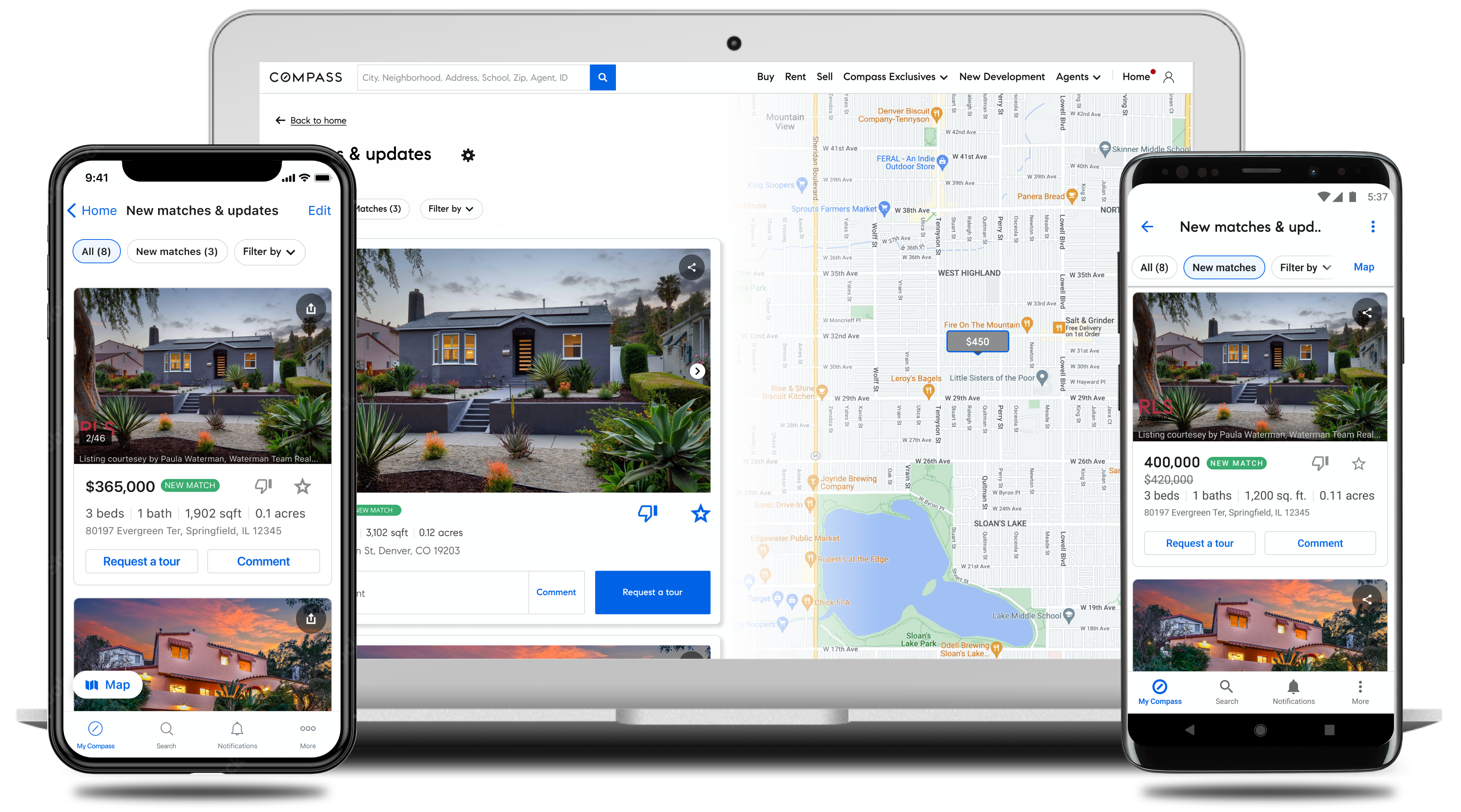
The listing feed keeps clients on top of the market without the fear of missing out.

The purpose of the listing feed is to centralize all client and agent search criteria in a single location on Client Home. The result will alleviate much of the pinpoints with Compass’s current state of products and will revolutionize how we think about optimizing the house search process.
The listing feed integration into Client Home is broken out into a multi-development phased approach. The project below is presented in its most optimal end state, phase 3, through the lens of the team I supported and the output I created.
In the final stage of the listing feed integration into the Client Home ecosystem, the concept of collections and saved searches as separate products is no more. Some of the pinpoints associated with being separate products are: features tied to each product (saved search or collections) has no relation to one another, causing confusion where likes, dislikes, comments and other collaborative features were engaged, Depending on who, a client or agent, created what, a collection or saved search, determines the set of features associated with the product; limiting more features on client created materials, Client’s mental model of finding a home doesn’t align with Compass’ past products and experiences, Onboarding clients to the Compass platform was cumbersome and time-consuming.
After the initial kick-off meeting, the first design artifact produced was a competitive analysis or what Compass likes to call, LFR. Learn. From. Reality. Culturally, this is important to Compass and its process.
The research provided a landscape for buy-side team members to better understand how direct and indirect competitors execute similar collaborative experiences, design patterns and their business model. The full list is seen here: Redfin, Zillow, Realator.com, StreetEasy, Opendoor, Homesnap, Trullia, Real scout, Home Depot, Disney & Airbnb.
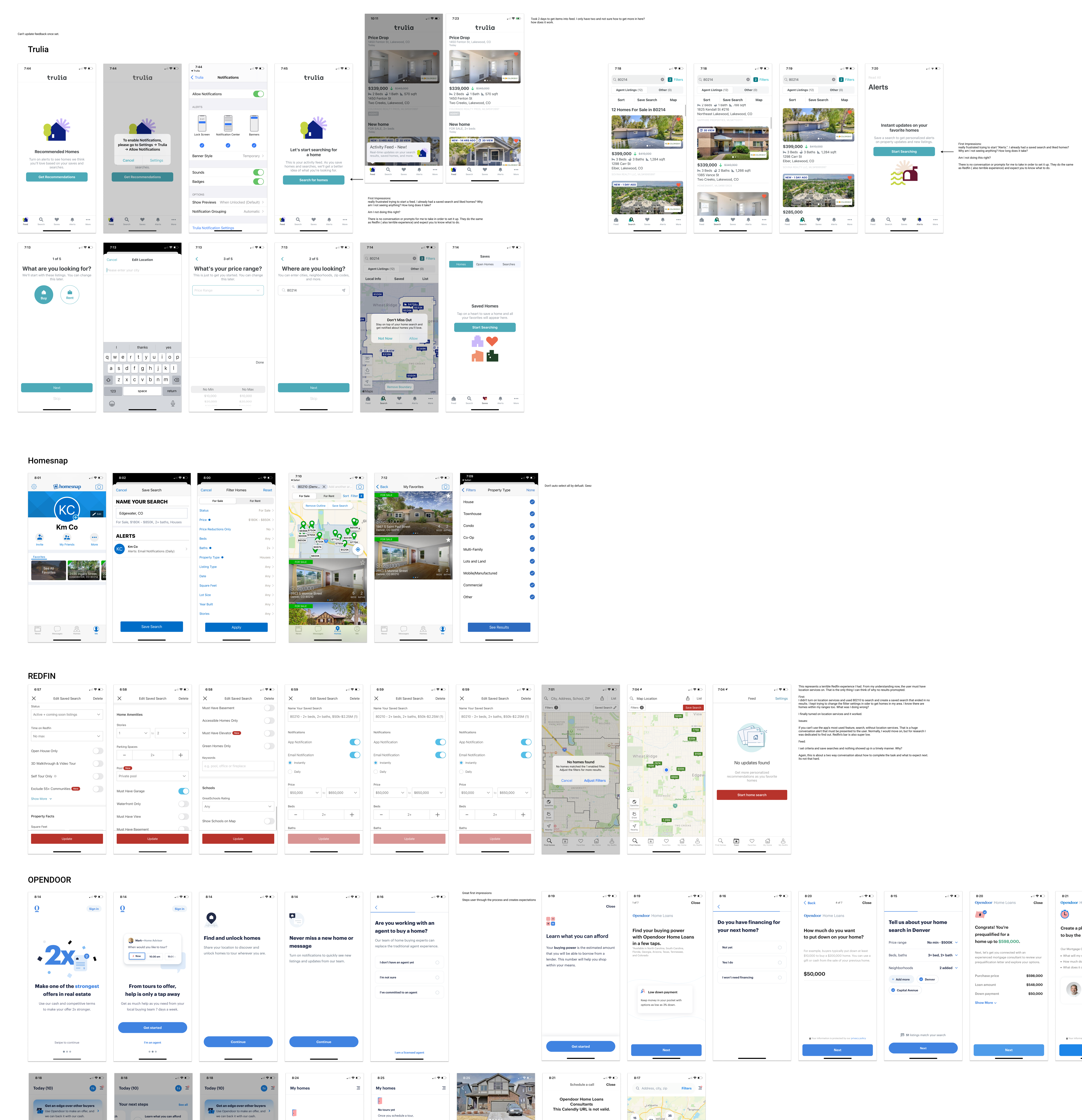
The next three images seen below are conceptual ideas of what the "feed" could be and how it might function within the Client Home: ephemeral, semi-permanent, ever-growing.
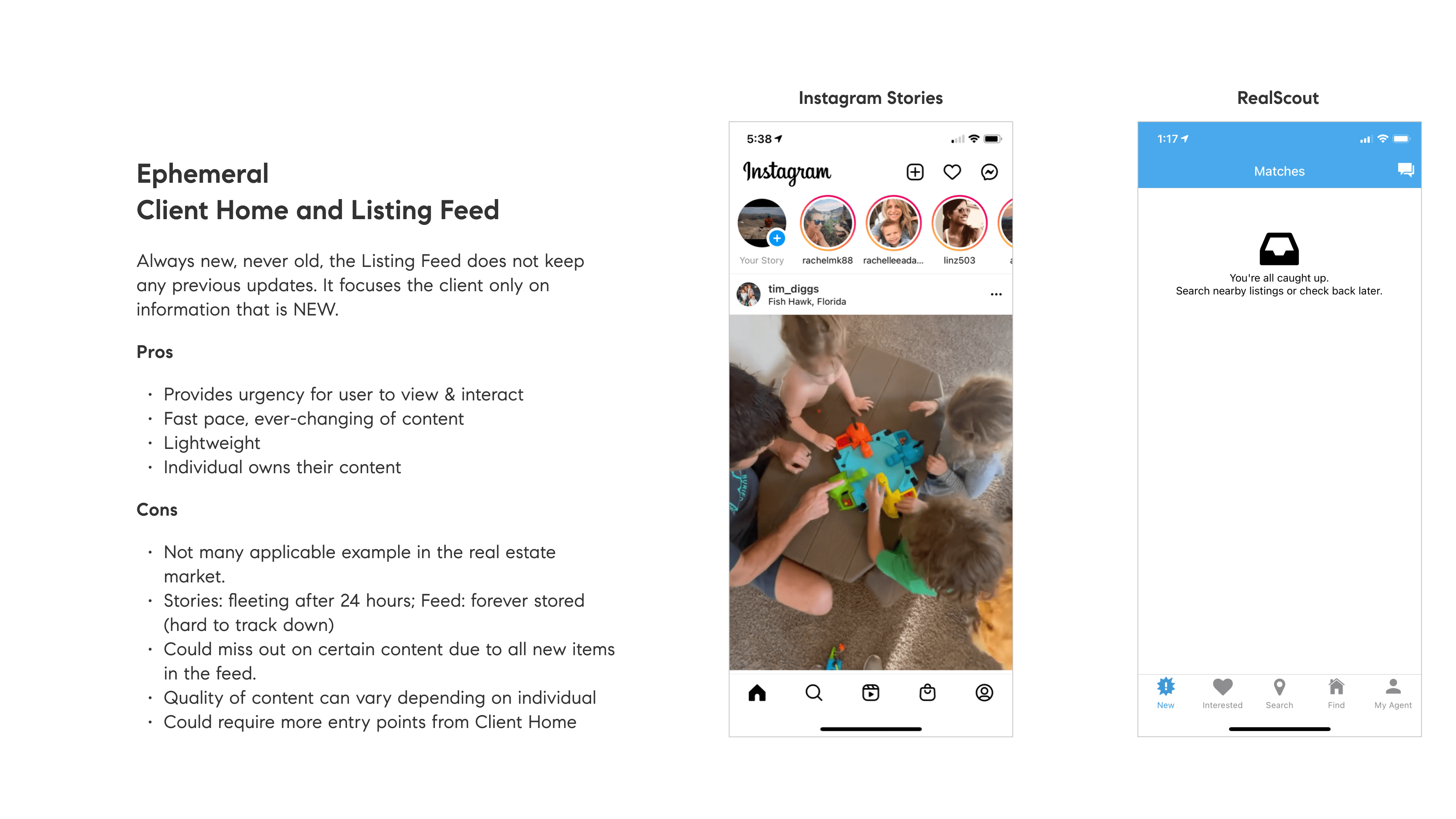
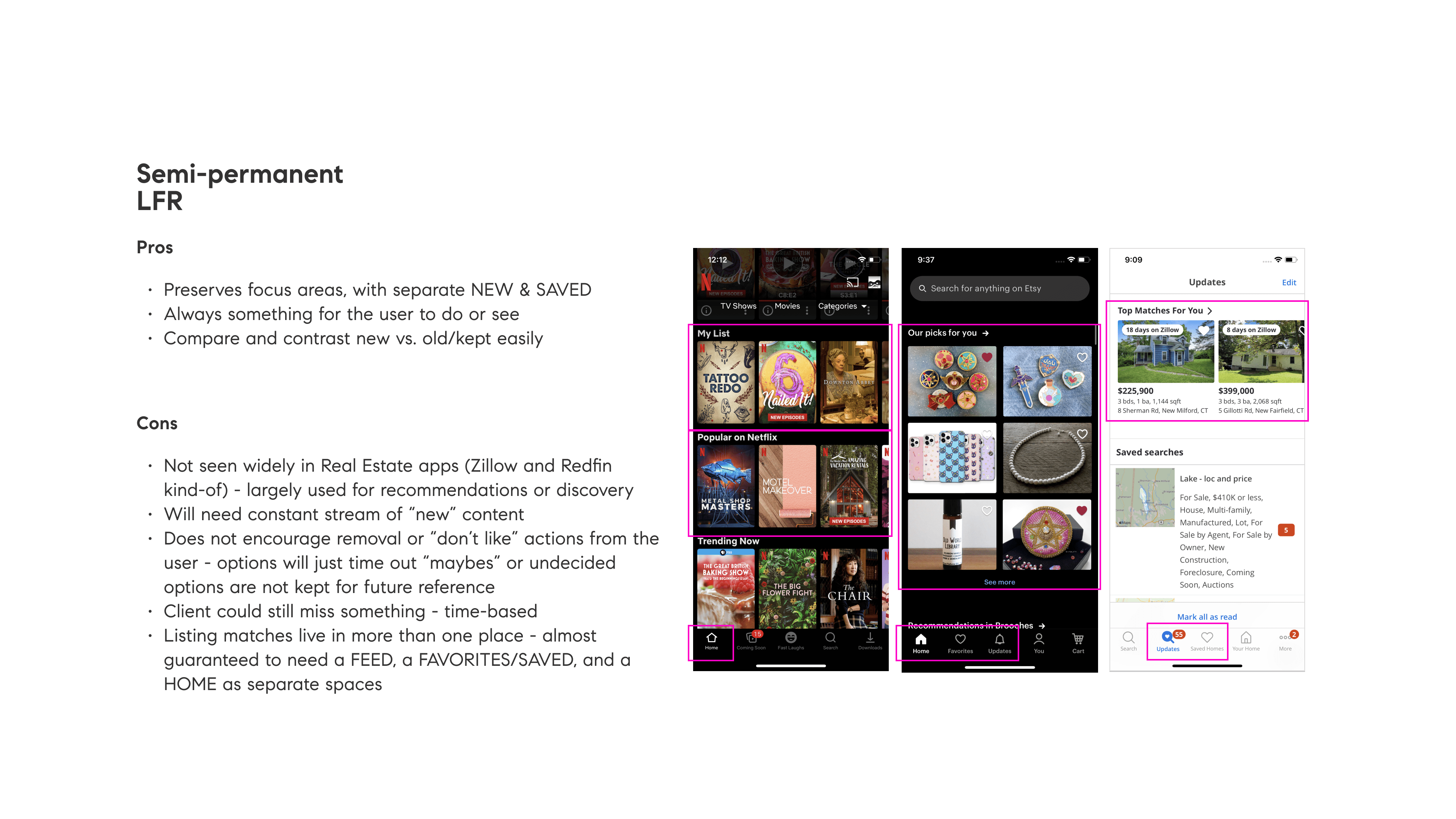

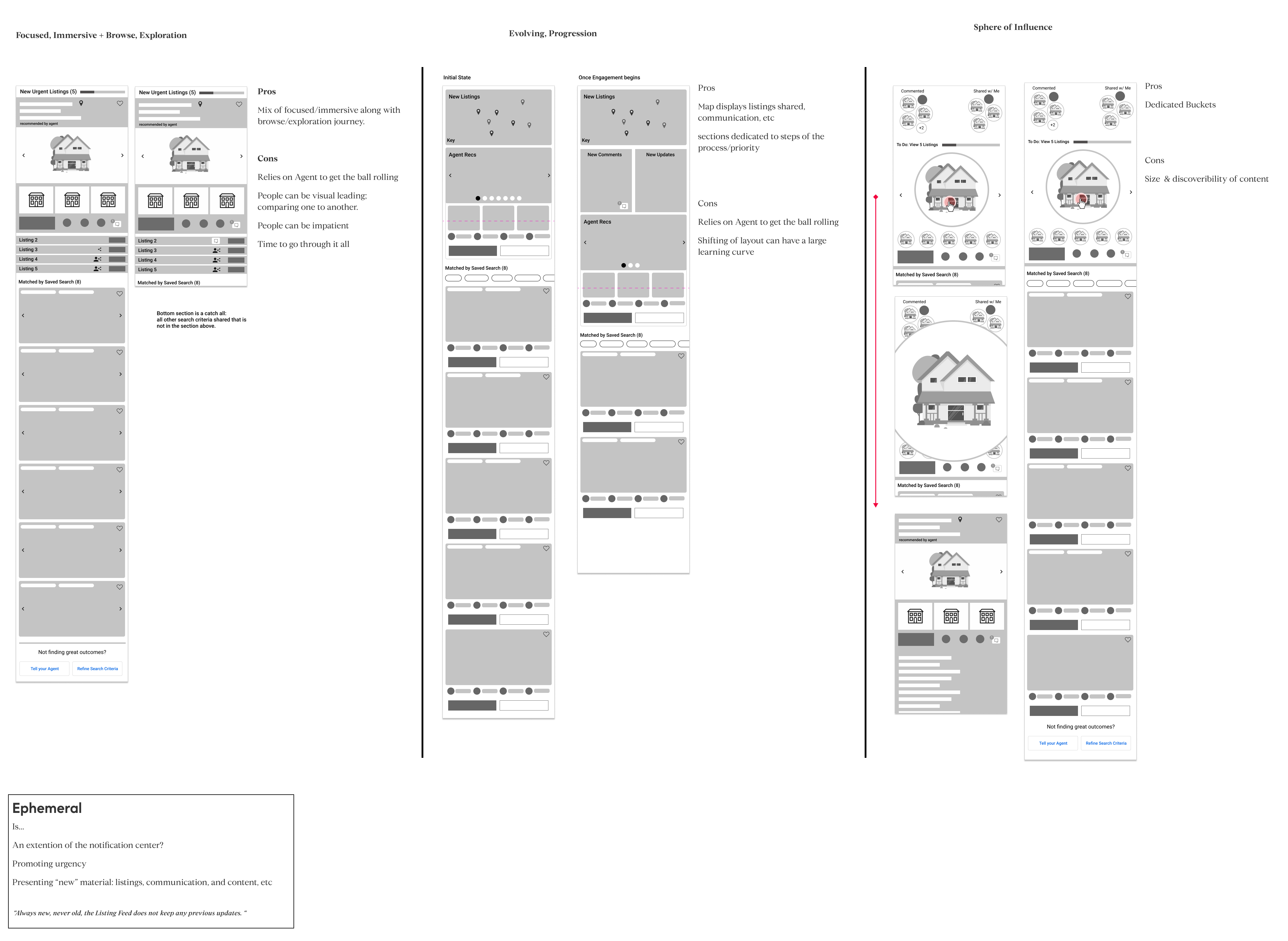



After many disucssions with team members, stakeholders and taking prior research with users into account, a semi-permanent feed is the path we have choosen. In a semi-permanent feed, the focus is new homes and previously favorited homes with updates in a manageable list. FOMO, fear of missing out, was one of the main concerns expressed in past reaserch seesions that influenced our dicussion. However, the the user will have the ability to view older homes they did not take action on if they so choose.
The next four images provided below are individual flows how to enable the feed on Client Home. I personally like to break out flows to individual scenarios because I feel it communicates with stakeholders more efficiently than a single comprehensive flow diagram.
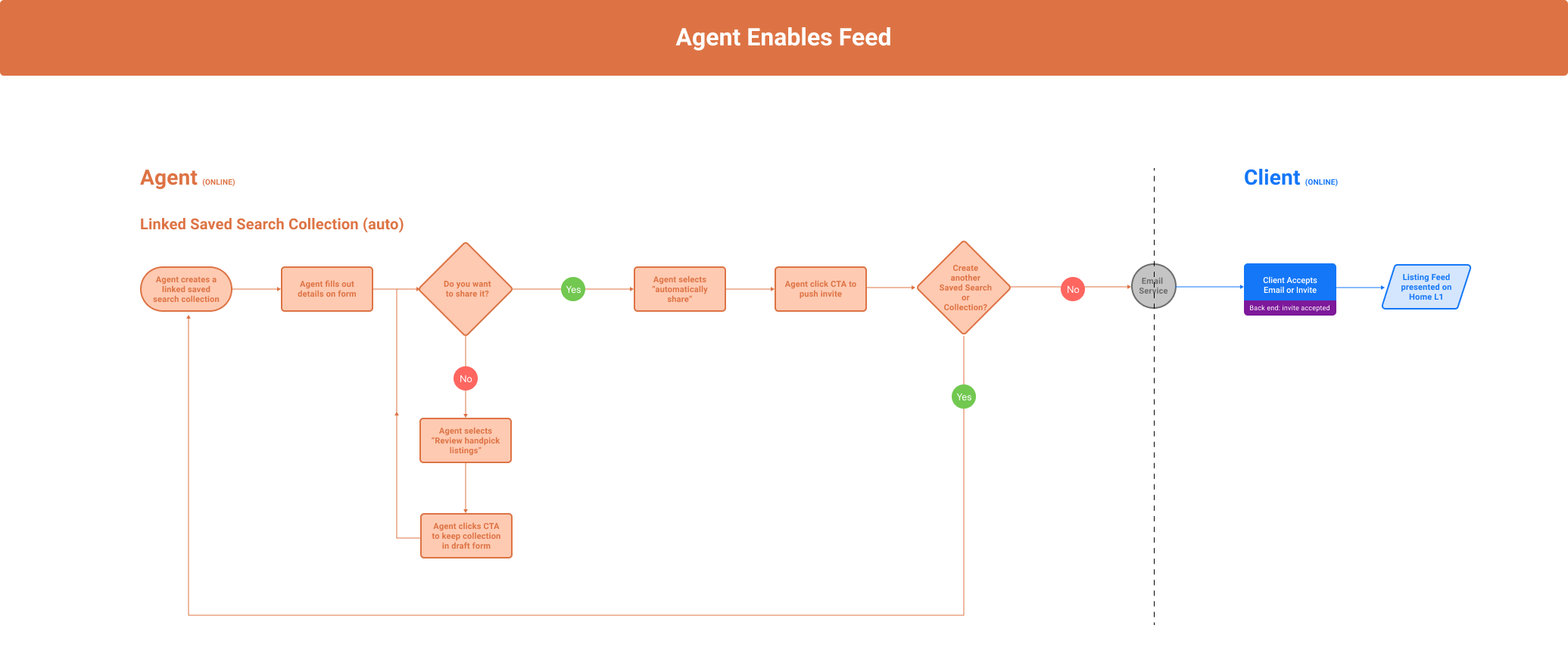
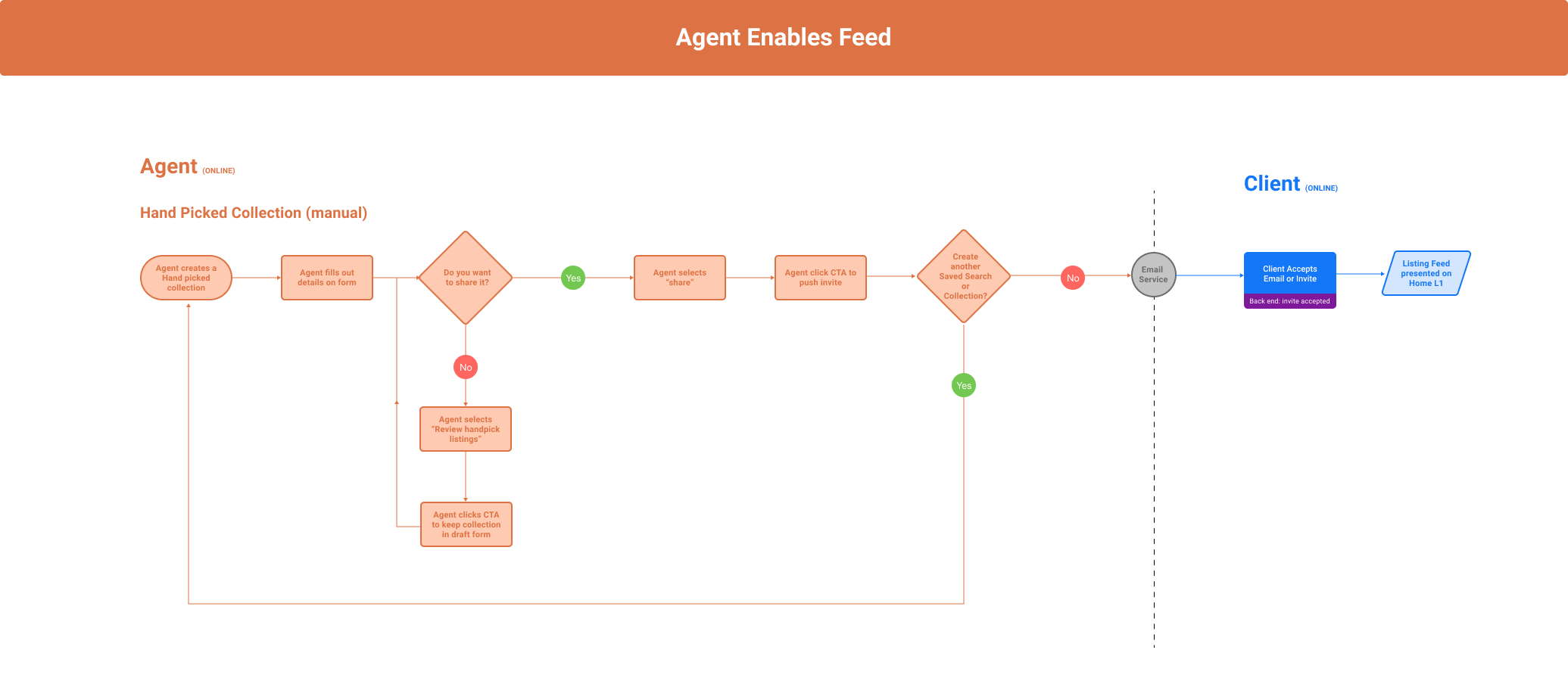

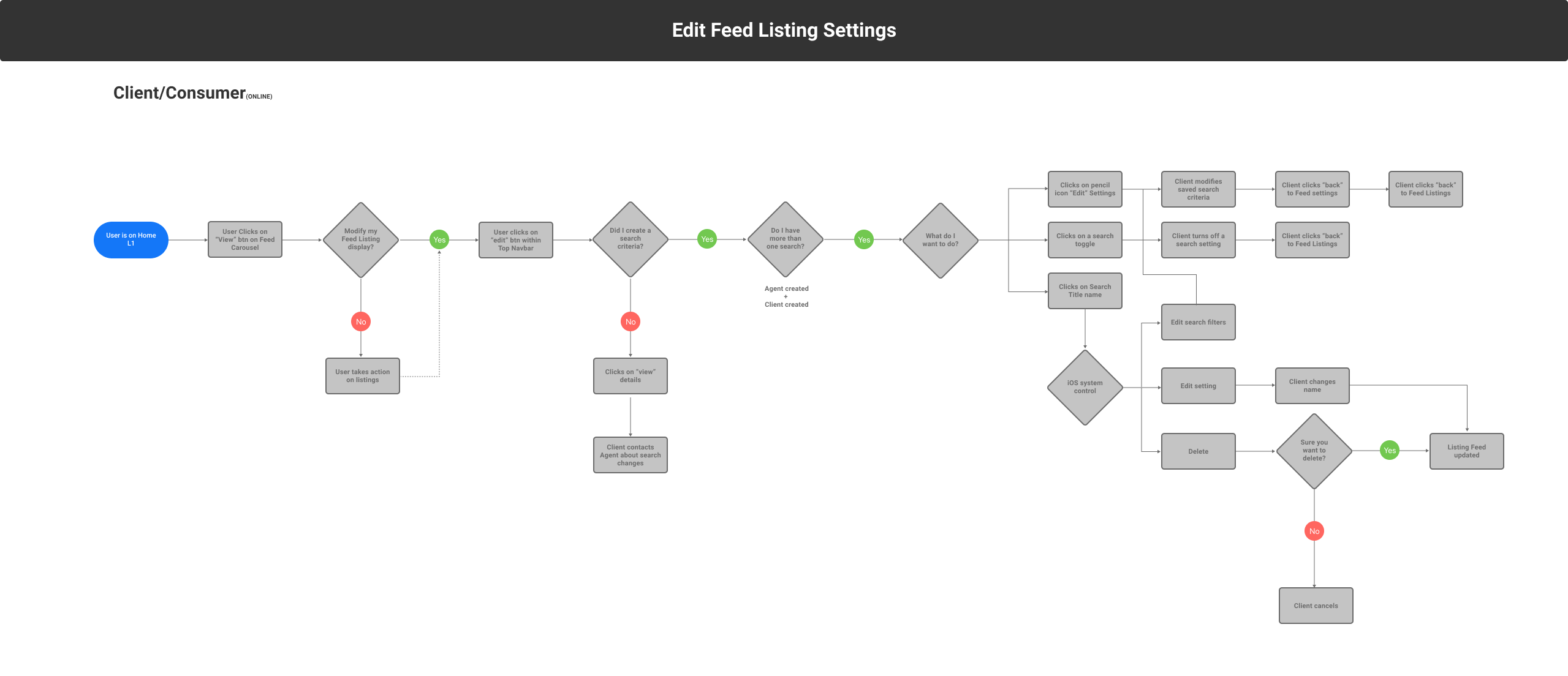
The image below is the concept we tested along with a link to the prototype I created. At this point in time, Client Home and The Feed were separate products thus having their own space on the navigation. This is a reflection and what is documented on Client Home's first round of testing.
View Prototype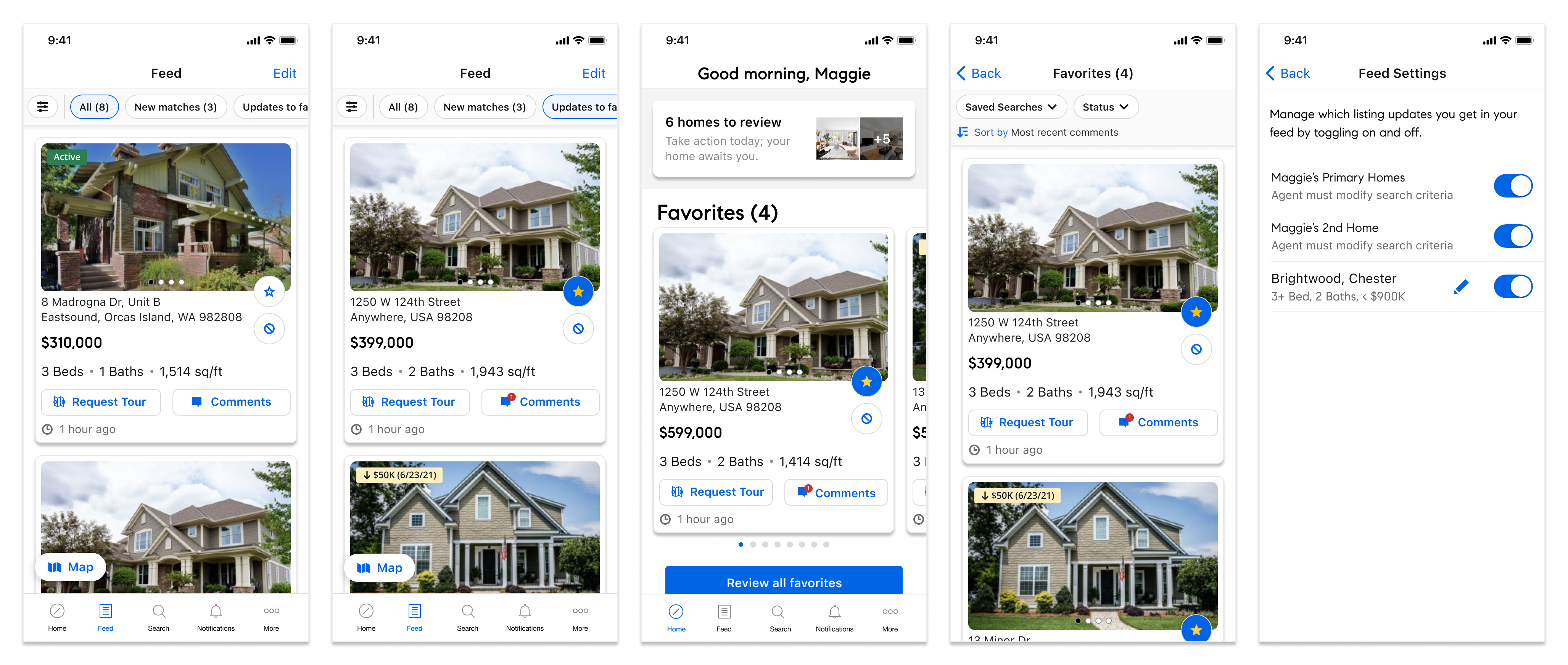
Jared, from our research team, conducted a moderated, mobile app test, with 8 participants on usertesting.com. At this point in time, the Client Home and listing feed were both a bottom navigational item. They were thought of as separate products. The first round of testing takeaways can be seen below.
The image below is an iteration based on the feedback above from users.
View Prototype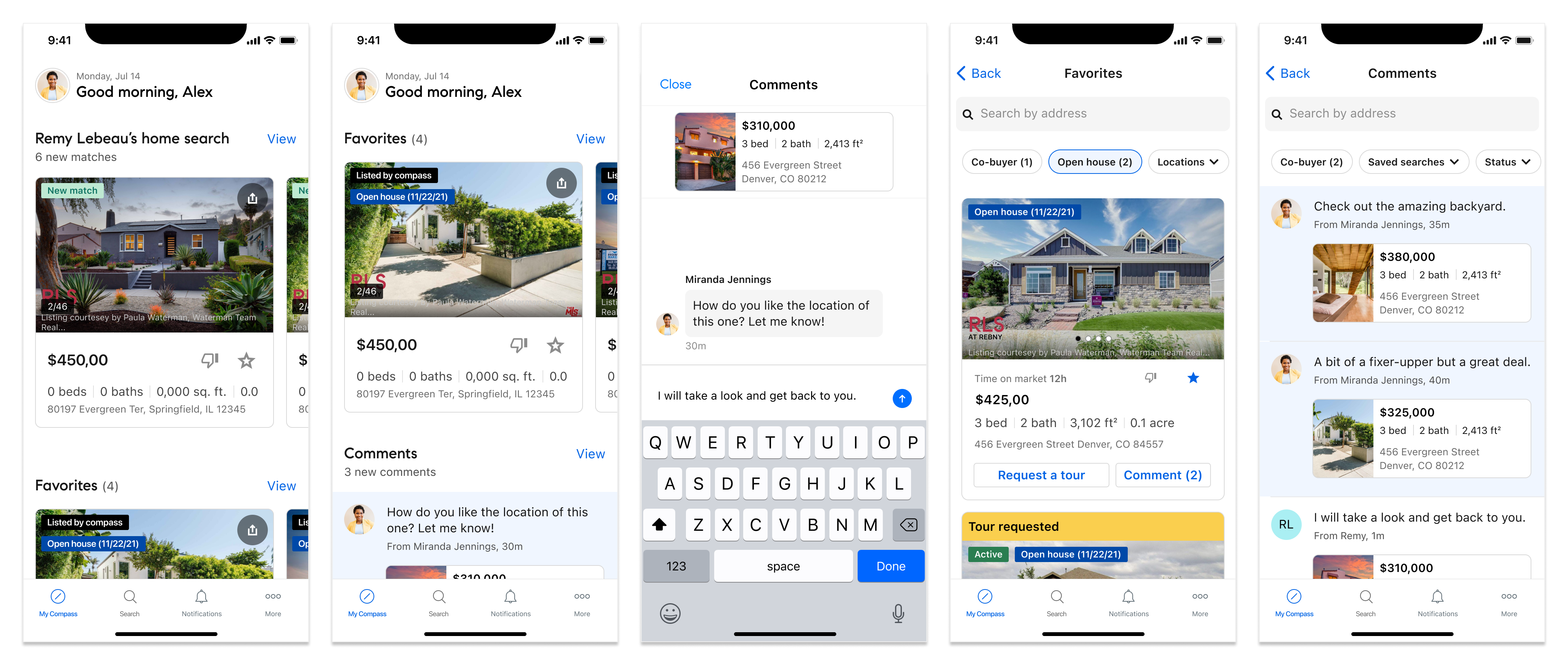
Jared, from our research team, conducted a moderated, mobile app test, with 8 participants on usertesting.com. The second round of testing takeaways can be seen below.

After several iterations and testing sessions, the conclusion to the feed integration onto cleint home, known as "My Compass" now, is done.